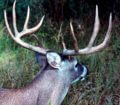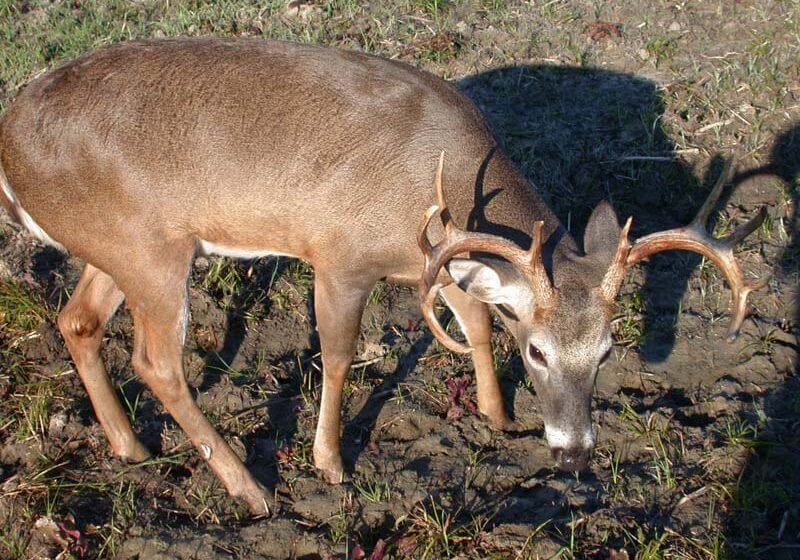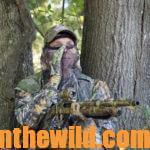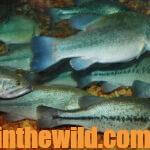Editor’s Note: If you understand what causes the rut, when the rut occurs, and what bucks do during the rut, you can increase your odds for bagging a mature whitetail each season. Of course, all across the U.S., rutting times are different. As many myths exist about the whitetails’ mating season as there are proven scientific facts. To determine what the rut means to the deer hunter and how to hunt the rut more effectively, let’s ask wildlife scientists.
 Big bucks aren’t hard to take, according to Dr. Karl Miller, a research scientist at the University of Georgia’s Deer Lab near Athens, Georgia. “If you’re in a place where big deer are, then bagging a trophy buck is not that difficult. If not, finding a place to hunt where big deer live can be a difficult task. In many states with large deer populations and large numbers of hunters, the highest percentage of animals taken are 1-1/2-year old bucks. The next largest percentage are the 2-1/2-year old bucks, with the older-age class deer representing the smallest number of deer harvested each season. Finding a place where there’s a trophy buck to hunt usually is more of a problem than actually hunting a trophy buck.”
Big bucks aren’t hard to take, according to Dr. Karl Miller, a research scientist at the University of Georgia’s Deer Lab near Athens, Georgia. “If you’re in a place where big deer are, then bagging a trophy buck is not that difficult. If not, finding a place to hunt where big deer live can be a difficult task. In many states with large deer populations and large numbers of hunters, the highest percentage of animals taken are 1-1/2-year old bucks. The next largest percentage are the 2-1/2-year old bucks, with the older-age class deer representing the smallest number of deer harvested each season. Finding a place where there’s a trophy buck to hunt usually is more of a problem than actually hunting a trophy buck.”
To become a trophy, a buck must be at least 3-1/2-years old, since deer usually reach their prime in the 3-1/2- to 5-1/2-year-old-age classes. Before you even can begin to discuss taking a trophy buck, you must first locate a region where a trophy buck lives. Then the best place to take a trophy buck is where you find the fewest hunters. A big buck will leave plenty of sign by marking his territory, making scrapes and rubs and leaving a big footprint. A trophy deer wants to announce to his world that he’s the dominant buck and is exerting his dominance throughout his realm.
 “The hunter should be able to read and understand the signs of the dominant one, just like the other bucks in the region do,” Miller explains. “During the rut, the trophy buck will make scrapes and freshen up those scrapes in hopes of attracting a doe he can breed. If he’s not bothered with a lot of hunting pressure, he’ll check these scrape during daylight hours in the time of the rut. Therefore, if you can find a trophy buck in a remote region that few, if any, hunters are going into, then you can take him – if you know how to read his signs and locate his scrapes. That’s why I say that trophy bucks are easy to bag.”
“The hunter should be able to read and understand the signs of the dominant one, just like the other bucks in the region do,” Miller explains. “During the rut, the trophy buck will make scrapes and freshen up those scrapes in hopes of attracting a doe he can breed. If he’s not bothered with a lot of hunting pressure, he’ll check these scrape during daylight hours in the time of the rut. Therefore, if you can find a trophy buck in a remote region that few, if any, hunters are going into, then you can take him – if you know how to read his signs and locate his scrapes. That’s why I say that trophy bucks are easy to bag.”
To learn more about hunting deer with John E. Phillips’ Amazon Kindle eBooks, print books and Audible books (the latest Audible is “How to Hunt Deer Like a Pro”) and Nook books, click here at https://johninthewild.com/books/#deer. You can type in the name of the book and download it to your Kindle, and/or download a Kindle app for your iPad, SmartPhone or computer. For a free download on how to make jerky from venison to provide a protein-rich snack, choose “How to Prepare Venison Jerky: The Ultimate Snack Food” at johninthewild.com/free-books.
















